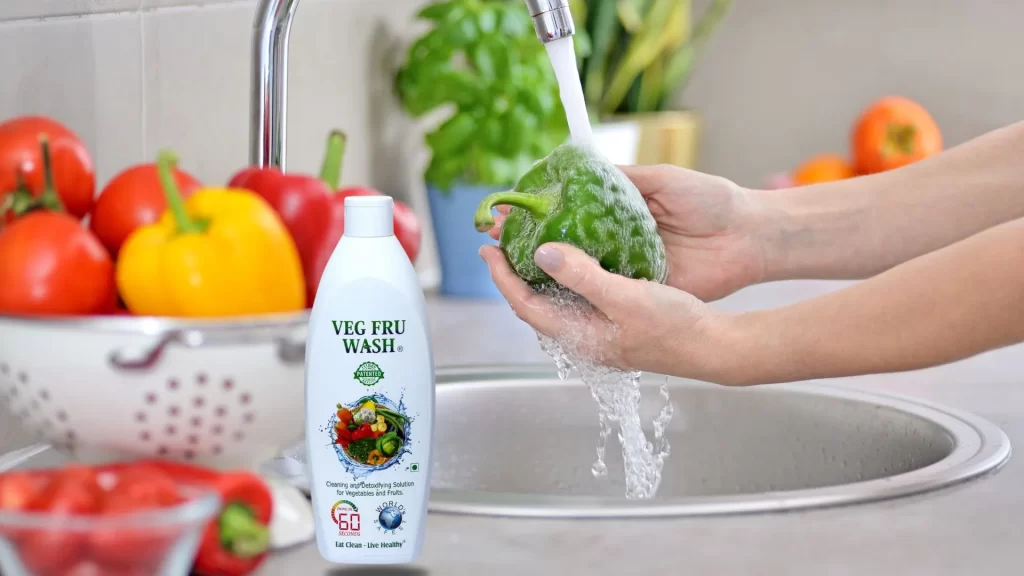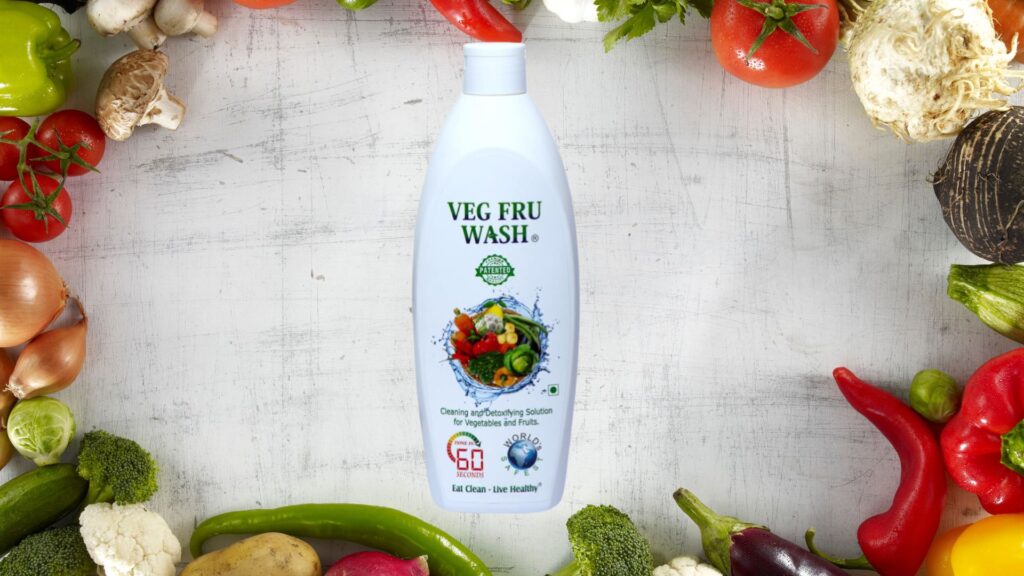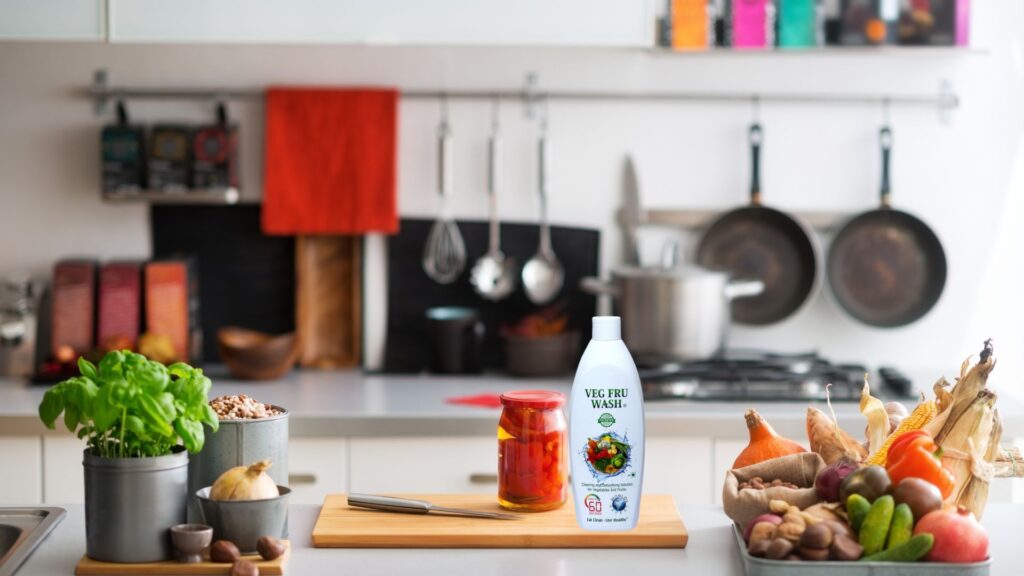
In today’s world, where health and hygiene are paramount, ensuring that the fruits and vegetables we consume are clean and free from harmful substances is more important than ever. Fruits and vegetable washing liquids have emerged as essential household products designed to help us achieve this goal. This comprehensive guide explores the importance of washing fruits and vegetables, the benefits of using a dedicated washing liquid, and how to effectively use these products to ensure your produce is safe and clean.
The Importance of Washing Fruits and Vegetables
Fruits and vegetables are integral to a healthy diet, providing essential vitamins, minerals, and fiber. However, they can also harbor harmful substances such as pesticides, bacteria, and dirt. Washing fruits and vegetables is crucial for several reasons:
- Removal of Pesticides: Conventional farming often involves the use of pesticides to protect crops from pests. While these chemicals help ensure a good harvest, residues can remain on the produce. Washing helps reduce pesticide levels.
- Elimination of Bacteria: Fruits and vegetables can be contaminated with bacteria like E. coli and Salmonella, which can cause foodborne illnesses. Proper washing helps remove these harmful bacteria.
- Dirt and Debris: Produce can accumulate dirt and other debris during harvesting and transportation. Washing ensures that your food is free from these contaminants.
- Preservation of Nutritional Value: Clean produce retains its nutritional value better, as contaminants can sometimes degrade the vitamins and minerals present in the food.
Benefits of Using Fruits and Vegetable Washing Liquid
While rinsing produce with water is beneficial, using a dedicated fruits and vegetable washing liquid offers several advantages:
- Enhanced Cleaning Power: Washing liquids are formulated to break down and remove pesticide residues, bacteria, and waxes more effectively than water alone.
- Safe and Non-Toxic: High-quality washing liquids are made from food-safe, non-toxic ingredients, ensuring that they do not leave harmful residues on your produce.
- Convenience: These products are easy to use and can be incorporated into your daily routine without hassle.
- Versatility: Fruits and vegetable washing liquids can be used on a variety of produce, from leafy greens to hard-skinned fruits, making them a versatile addition to your kitchen.
How to Use Fruits and Vegetable Washing Liquid Effectively
To maximize the benefits of your fruits and vegetable washing liquid, follow these simple steps:
- Preparation: Start by preparing a clean sink or a large bowl with cold water. Ensure that the water is sufficient to submerge the produce you plan to wash.
- Adding the Washing Liquid: Follow the instructions on the product label to add the appropriate amount of washing liquid to the water. Most products require just a few drops.
- Soaking: Place the fruits and vegetables in the water and let them soak for the recommended time, usually around 2-5 minutes. This allows the washing liquid to break down and remove contaminants effectively.
- Gently Scrubbing: For produce with thicker skins or surfaces, such as apples, cucumbers, or potatoes, use a soft brush to gently scrub them. This helps remove any remaining residues and dirt.
- Rinsing: After soaking and scrubbing, rinse the produce thoroughly under running water to remove any traces of the washing liquid and contaminants.
- Drying: Use a clean cloth or paper towels to dry the produce before storing or consuming it. Proper drying helps prevent the growth of bacteria and mold.
Choosing the Right Fruits and Vegetable Washing Liquid
When selecting a washing liquid, consider the following factors to ensure you choose a safe and effective product:
- Ingredients: Look for products made from natural, non-toxic ingredients. Avoid those with harsh chemicals or artificial additives.
- Certifications: Check for certifications from reputable organizations that ensure the product meets safety and quality standards.
- Customer Reviews: Reading reviews from other consumers can provide insights into the product’s effectiveness and ease of use.
- Brand Reputation: Choose products from well-known and trusted brands that have a history of producing high-quality cleaning solutions.
DIY Alternatives to Commercial Washing Liquids
If you prefer a homemade solution, there are several DIY alternatives to commercial fruits and vegetable washing liquids:
- Vinegar Solution: Mix one part white vinegar with three parts water. Soak the produce in this solution for a few minutes, then rinse thoroughly with water.
- Baking Soda Solution: Dissolve one teaspoon of baking soda in a large bowl of water. Soak the produce for a few minutes, then scrub gently and rinse well.
- Salt Solution: Combine one tablespoon of salt with a large bowl of water. Soak the produce for a few minutes, then rinse thoroughly.
Common Myths and Misconceptions
There are several myths and misconceptions about washing fruits and vegetables. Let’s debunk a few:
- Myth: Tap Water is Enough: While rinsing with tap water can remove some dirt and bacteria, it is not as effective in removing pesticide residues and waxes as a dedicated washing liquid.
- Myth: Washing Liquid Leaves Harmful Residues: High-quality fruits and vegetable washing liquids are formulated to be safe and non-toxic. When used as directed and rinsed properly, they do not leave harmful residues.
- Myth: Organic Produce Doesn’t Need Washing: Even organic produce can be exposed to bacteria, dirt, and natural pesticides. Washing all fruits and vegetables, regardless of their source, is essential for safety.
Conclusion
Incorporating a fruits and vegetable washing liquid into your routine is a simple yet effective way to ensure the produce you consume is clean and safe. By removing harmful pesticides, bacteria, and dirt, these products help protect your health and enhance the nutritional value of your fruits and vegetables. Whether you choose a commercial washing liquid or a DIY alternative, the key is to make thorough washing a consistent part of your food preparation process. Embrace this small but significant step towards a healthier lifestyle and enjoy the peace of mind that comes with knowing your produce is truly clean.


